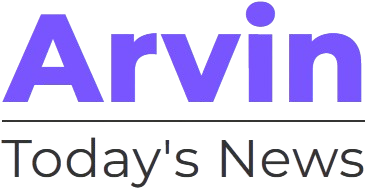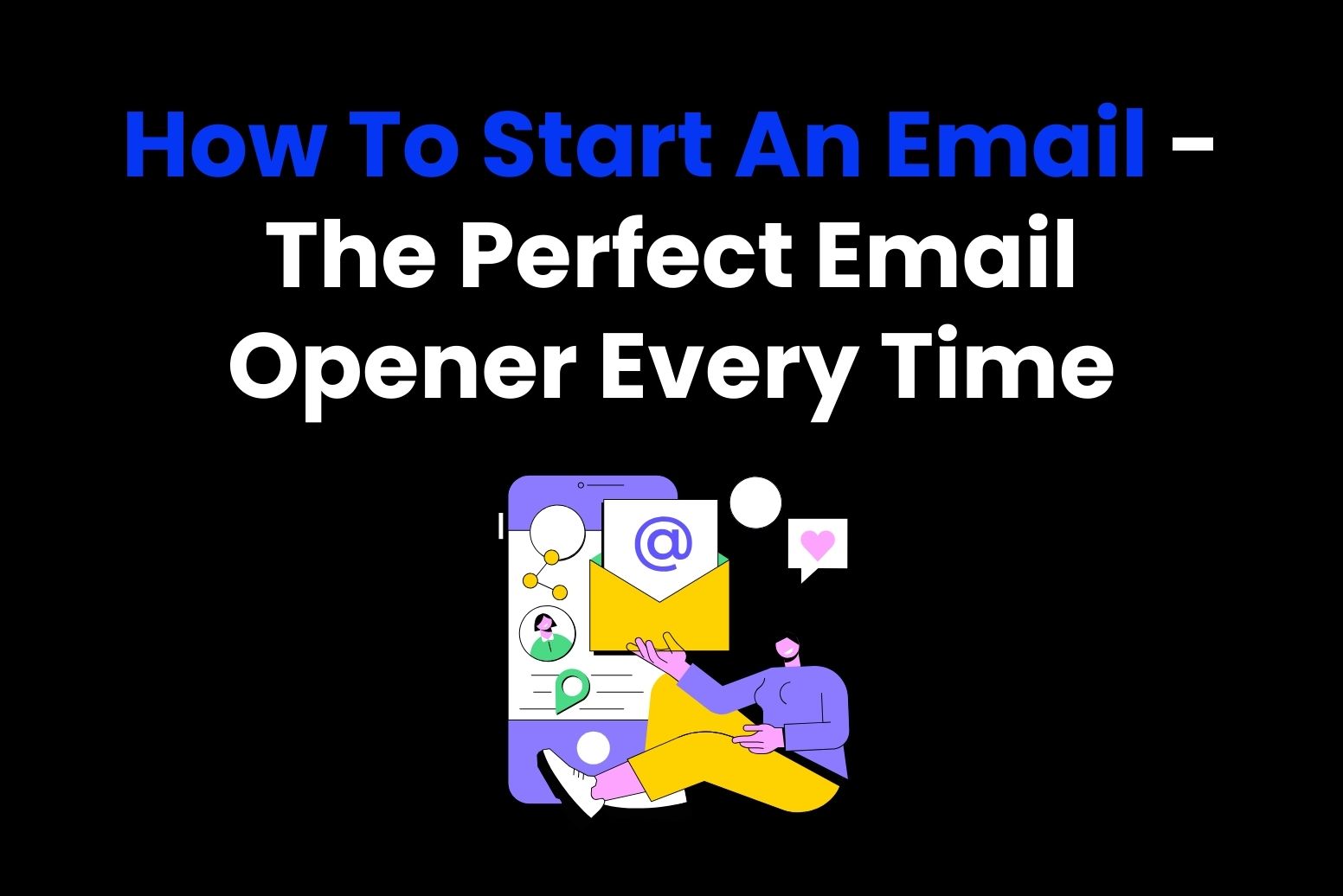We’ve all been there: you open your inbox, find a new email, and the first line makes you lose interest immediately. It either feels too stiff or just too casual. How can you avoid that awkward first impression? The secret is knowing how to start an email the right way. No matter you’re emailing a client, a colleague, or a friend, starting your email on the right foot sets the tone for the rest of your message.
In this article, we’ll walk you through everything you need to know about how to start an email like a pro, from formal to casual, with examples you can easily implement. Ready to craft email openers that grab attention, sound natural, and actually make people want to keep reading? Let’s dive in!
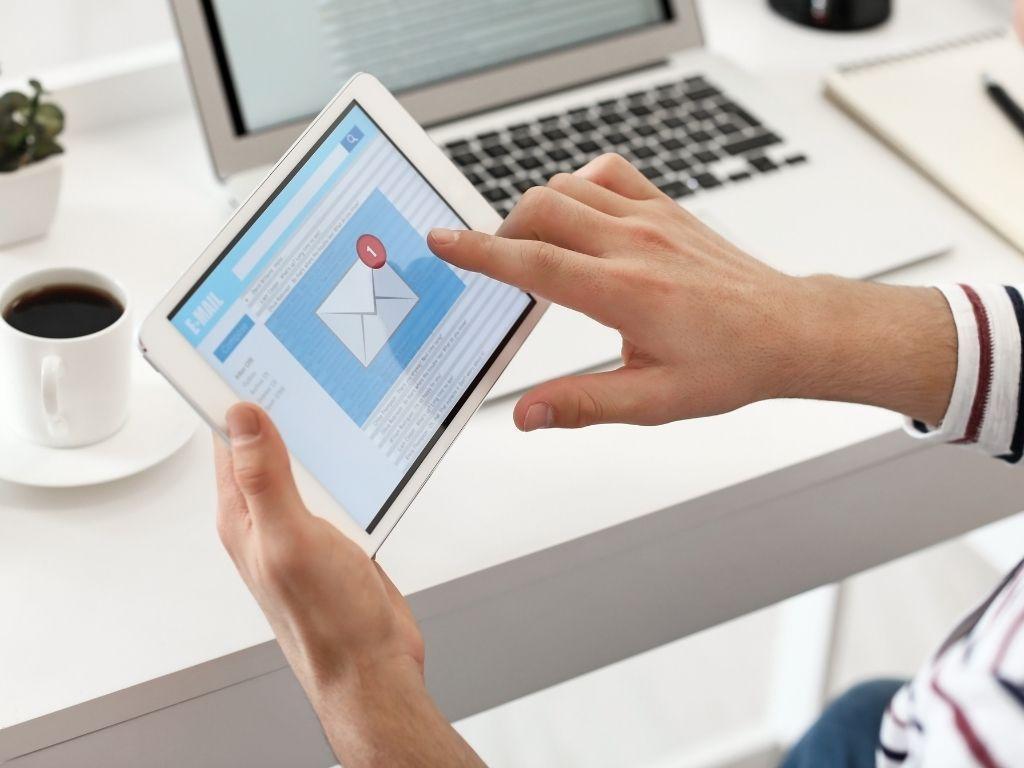
Why Does Your Email’s First Line Matter?
Okay, so you might be thinking, “Why does it even matter how I start an email?” Well, let’s break it down. Imagine you open an email, and the first line says, “Dear Sir/Madam, I hope this email finds you in the best of health…” Yawn, right? It’s stiff, it’s robotic, and you probably wouldn’t even make it past the first sentence.
The first line of your email is like the icebreaker at a party. You’ve got one shot to make a good impression, and you better make it smooth. If you nail your first line, you get the reader’s attention. On the flip side, if you start with something too formal or too casual, it might leave them wondering if you even know how to email properly.
Know Your Audience – Who Are You Talking To?
So, how do you actually decide how to start an email? It all comes down to one simple question: Who are you writing to? This question determines whether you need a formal or casual tone. Let’s talk about this more in detail:
- Emailing Your Boss Or Client?
If you’re writing an email to your client, you want to sound professional but not too stuffy. A formal tone is important, but you don’t want to come off like a robot. Try something like:
“I hope this email finds you well. I wanted to follow up on…”
See how this shows you’re respectful and professional, but not too stiff.
- Emailing a Friend?
You can be way more casual here, just like you’re at your annual brunch. In fact, the more chill, the better! A friendly “Hey Lizzy, how’s everything going?” will feel more natural when you’re writing to a friend. - Cold Emailing Someone New?
If you’re cold-emailing someone, you don’t know them yet, so you’ve got to walk the line between friendly and professional. In this situation, go for something like: - “Hi Robert, I hope you’re doing well. I wanted to reach out because…”
See how this works perfectly? You’re polite, approachable, and direct.
By now, you’ve probably guessed: how to start an email really depends on who’s on the other end of that screen. But no worries, we’ll give you more specific examples throughout!

How To Start An Email In A Professional Setting
Now, if you’re thinking about how to start an email at work or for business purposes, this is where things get a bit trickier. You need to maintain a balance between formal and friendly because you don’t want to sound like you’re reading from a script, but you also want to stay professional.
Here are a few friendly yet professional email openers you can use:
- “I hope this email finds you well.”
- “I wanted to follow up on our last conversation…”
- “Hope you’re having a productive week so far!”
These are easy, breezy, and polite enough to maintain a professional vibe without being too stiff.
Example:
“Dear Marcello,
I hope this email finds you well! I wanted to follow up on our previous discussion regarding the project timelines…”
You’ve got an opener that’s warm, polite, and professional.

How To Start An Email In Casual Settings
Now, let’s have some fun! When you’re writing a casual email to a friend, a colleague you know well, or someone you feel comfortable with, you don’t need to be so formal. In fact, you can throw in a little personality, a joke, or just keep it short and sweet.
Here are some fun and easy email openers to use:
- “Hey David, what’s up?”
- “Hi William, hope you’re doing great!”
- “Hey there! How’s everything going?”
These openers set a friendly tone and make your email feel less like a chore to read.
Example:
“Hey Sarah,
Hope you’re doing awesome! Just wanted to check in and see how the new job’s going…”
Easy, fun, and totally natural. No awkwardness here!
And here’s the thing: if you’re ever stumped on how to start an email for work, you can ask an AI assistant like Arvin AI to teach you some writing strategies. Seriously! Tools like Arvin AI writing are perfect for quickly drafting email openers that hit the right note without overthinking it.
Wait, let’s get a second opinion from an AI writing assistant powered by GPT-4o, Arvin AI. So we told Arvin AI about Sarah and our relationship with her, and here’s what Arvin thinks would be a good way to start this email:

It looks like Arvin agrees with what we just learned, so we guess we’re on the right track. And yes, Arvin, we would love it if you could write the entire email as well (plus give some suggestions for our next biology topic class—that would be the cherry on top!).
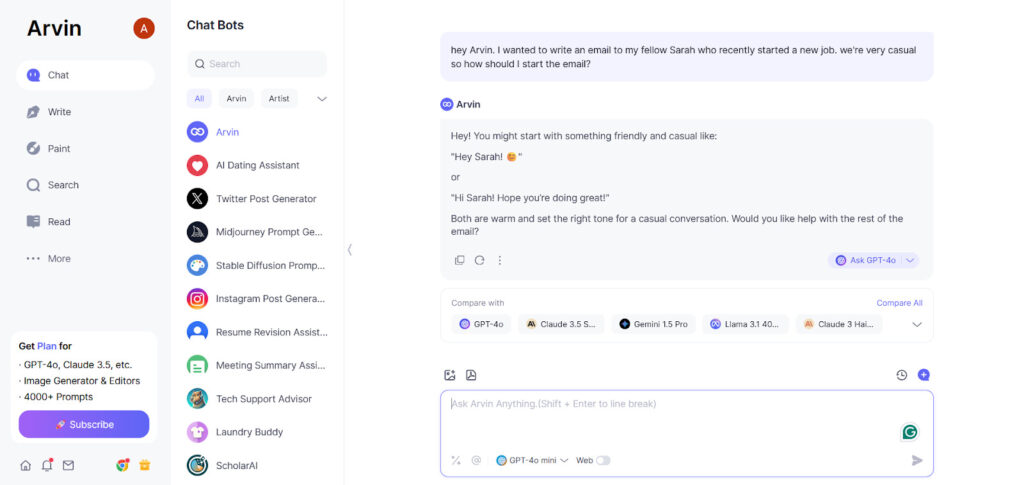
So, Arvin AI can help you with not only how to start an email but also how to end it the right way. Is Arvin AI your beginning, middle, and end yet (pun intended)?
How To Start An Email For Cold Outreach Or Networking
Okay, what about those cold emails you send to people you don’t know yet? This is where things get interesting. You want to be friendly but also professional so you don’t sound like you’re trying too hard.
Here’s the trick: Don’t overcomplicate it. Start simple and polite. Try something like these:
- “I hope this message finds you well.”
- “I’m reaching out because I saw your work on Instagram, and I wanted to connect.”
- “I wanted to introduce myself and discuss how we can collaborate on…”
These openers are perfect for cold outreach or networking emails. They show that you’re respectful of the person’s time and that you’re genuinely interested in starting a conversation.
Example:
“Dear Sunny,
I hope you’re doing well today! My name is Rose, and I came across your profile on LinkedIn. I wanted to connect and discuss potential collaboration opportunities…”
Pro Tip: If you’re new to cold outreach, you can try these ChatGPT prompts for cold outreach to begin with.
How To Start An Email When You Need To Be Direct Or Urgent
Sometimes, you need to get to the point, and you need to do it fast. Maybe you’re sending a follow-up on something important, or maybe you have a deadline coming up. You want your opener to be polite, but you also want to make it clear that the email requires action.
Here are a few examples of how to start an email when urgency is needed:
- “I need your urgent input on…”
- “Just a quick note to update you on…”
- “I wanted to address an important issue regarding…”
These openers get straight to the point without being pushy. You’re just being clear about the urgency of the matter.
Example:
“Dear Madeleine,
I need your urgent input on the upcoming product launch. Can you review the attached document and share your feedback by Friday?”
This gets the job done; no fluff, just clear action.
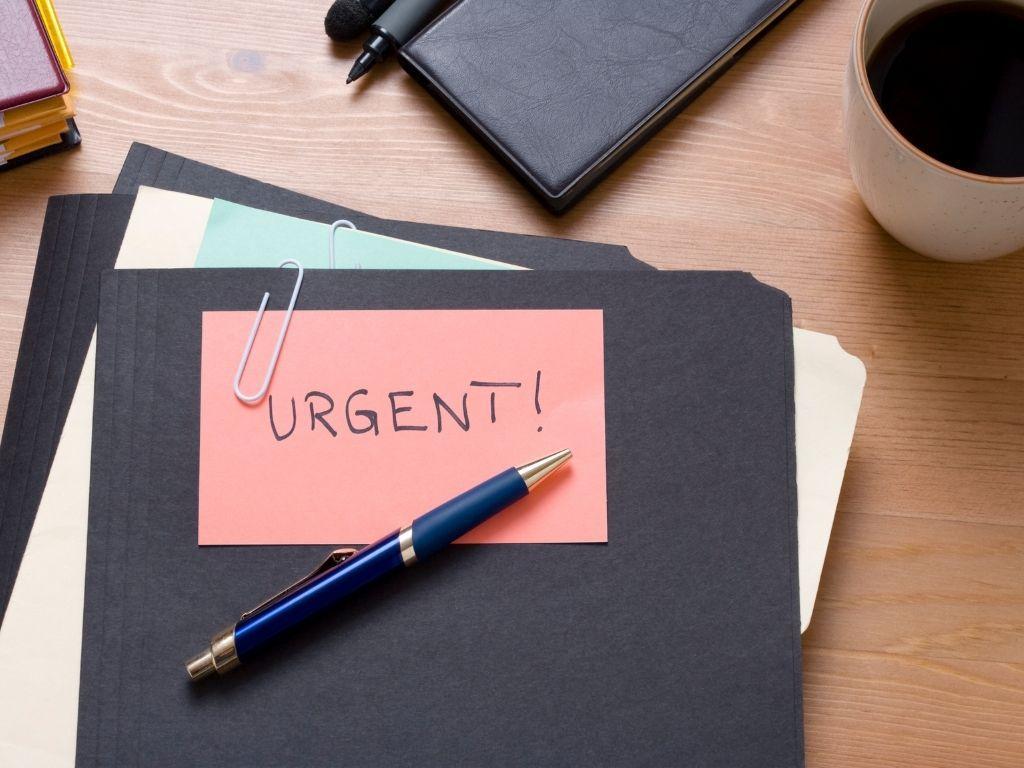
The Most Common Mistakes When Starting An Email (And How To Avoid Them)
Let’s face it: we’ve all made mistakes when drafting emails. But knowing how to start an email pitfalls will help you avoid sounding unprofessional or awkward. Here are a few things you want to watch out for:
- Being Too Formal Or Robotic: You’re writing an email, not an essay. Keep it simple, and avoid overusing phrases like “I trust this email finds you in good health.” You’re not trying to sound like a letter from the 1800s!
- Being Too Casual: If you’re emailing a new client, don’t start with, “Yo!” Keep it respectful but still friendly. If in doubt, always aim for something in the middle.
- Not Greeting The Recipient: Skipping the greeting can make you seem rude or impersonal. Always address the person you’re emailing directly by using their name!
- Using Too Many Exclamation Marks: While an exclamation mark here and there is fine, don’t overdo it. If you’re using too many of them, you can come off as unprofessional.
- Starting Without a Clear Purpose: If you’re not sure why you’re emailing someone, it will show. So make sure your first line briefly reflects the purpose of your message.
FAQS About How To Start An Email
Here are a few of the most frequently asked questions about how to start an email:

What’s the best way to start an email for a job application?
When you’re applying for a job, the first impression matters a lot, so you want to ensure you set the right tone. It should be formal, respectful, and demonstrate your genuine interest in the position. Instead of diving straight into your qualifications or a long introduction, keep it simple and clear.
A good opener for a job application email might look like this:
“Dear James,
I hope this email finds you well. I’m writing to express my interest in the Male Nurse position at Pearl Hospital.”
Should I use the recipient’s name in the opening?
Yes, absolutely! Using someone’s name in the email greeting adds a personal touch that shows you’re speaking directly to them. When you take the time to use their name, it shows that you’re making an effort to personalize the message, which can make a big difference in how it’s received. For example, you can say something like: “Dear Mr. Smith” or “Hi Sarah,”
Can I use emojis in email openers?
Emojis can be a fun and expressive way to communicate in more casual emails, but they should be used with caution. For casual, personal, or friendly emails, you might consider including an emoji in your opener to set a warm and friendly tone. However, when it comes to professional or formal emails, it’s best to avoid using emojis unless you know the recipient’s communication style.
How should I start a thank you email?
Thank you emails are a great opportunity to show appreciation and build connections. The key is to start with genuine gratitude. Whether you’re thanking someone for an interview, a gift, or help on a project, let them know you appreciate their time or effort. Take this as an example:
“Dear Anna,
Thank you so much for your time during our meeting today. I really enjoyed discussing the ideas you have for our new project.”
Should I use contractions in email openers?
Using contractions (like “I’m” instead of “I am”) makes your email sound more natural and conversational, which is great for friendly and casual emails. However, if you’re writing a professional or formal email, try to avoid overusing contractions, but they’re okay as long as the tone of the message stays respectful.
Take Home Message
Now that you have the knowledge of how to start an email, it’s time to put those skills into action! Don’t be afraid to inject a little warmth or creativity into your email—after all, you want the recipient to feel like they’re talking to a human, not a robot.
But if you ever find yourself staring at a blank screen, wondering how to start an email or what tone to use, don’t worry—you don’t have to do it alone. That’s where Arvin AI comes in handy! With just a few simple prompts, you can get personalized help crafting the perfect email tailored to your exact needs. Ready? Try it today!
